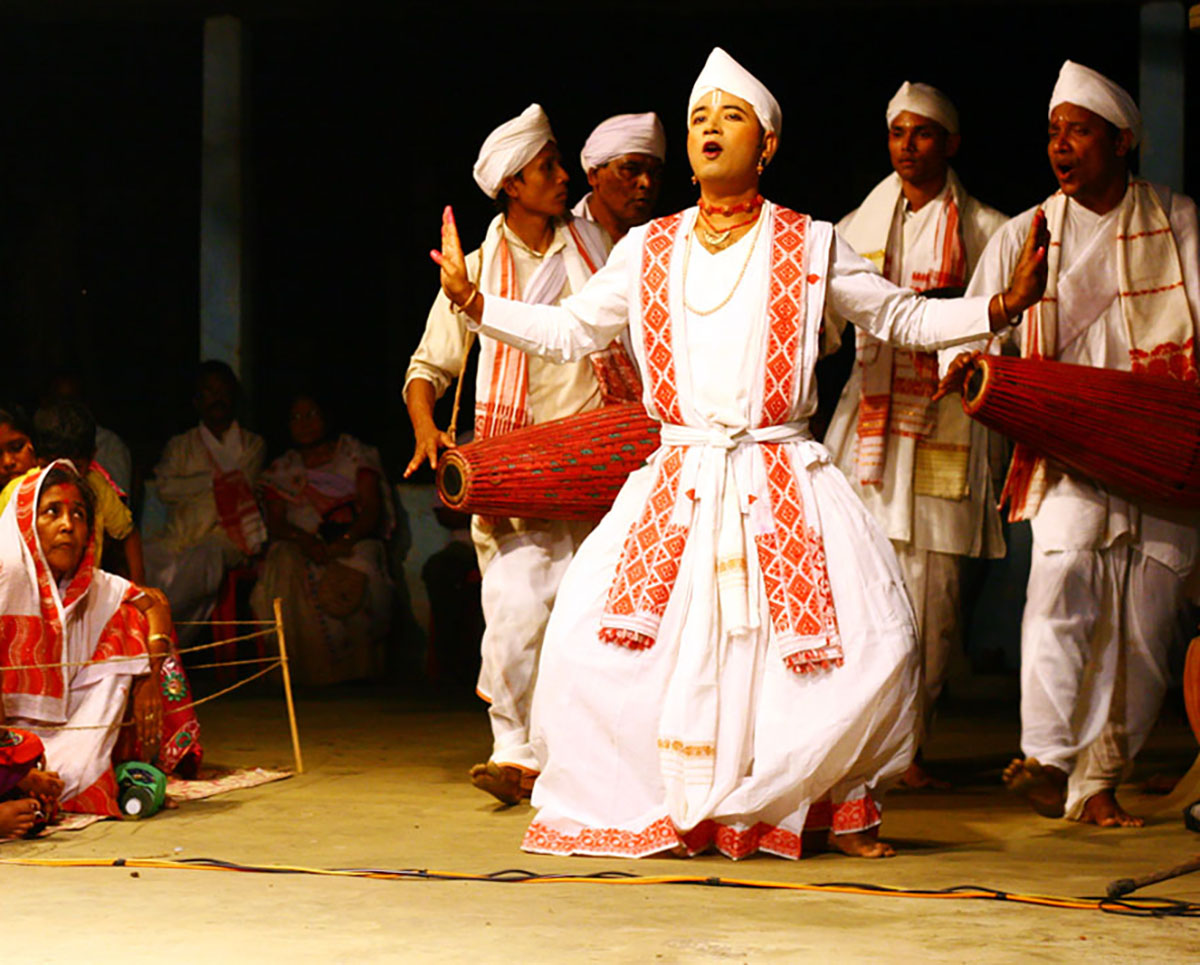
Ojapali, a traditional dance form originating from the Indian state of Assam, is a vibrant and captivating art that has deep cultural significance. This dynamic performance art is characterized by its energetic movements, rhythmic drumming, and vibrant costumes, all of which come together to create a mesmerizing spectacle. Ojapali is not just a form of entertainment; it is a reflection of the rich heritage and traditions of Assam, showcasing the region's history and folklore through expressive storytelling and rhythmic expressions. As we delve into the world of Ojapali, we uncover a tapestry of tradition, artistry, and cultural pride that has been passed down through generations. Let's explore eight fascinating facts about Ojapali that shed light on its significance and enduring appeal.
Key Takeaways:
- Ojapali is a vibrant traditional dance from Assam, India, telling stories through expressive movements and music, preserving the region’s rich cultural heritage and mythology.
- Recognized by UNESCO, Ojapali blends traditional and contemporary elements, serving as a powerful medium for social and cultural expression, uniting and inspiring the Assamese community.
Ojapali is a traditional dance form from Assam, India.
Ojapali is a vibrant and captivating traditional dance form that originated in the northeastern state of Assam, India. It is deeply rooted in the cultural heritage of the region and holds significant historical and artistic value.
It is performed as a form of storytelling.
Ojapali performances typically involve a group of artists who use a combination of dance, music, and theatrical elements to narrate stories from ancient Assamese folklore and mythology. The dancers skillfully depict various characters and emotions, captivating the audience with their expressive movements and gestures.
The dance is accompanied by traditional musical instruments.
During Ojapali performances, the dancers are accompanied by a variety of traditional musical instruments such as the dhol (drum), pepa (horn), and taal (cymbals). These instruments create a rhythmic and melodious backdrop that enhances the overall impact of the storytelling through dance.
Ojapali often portrays themes of love, devotion, and mythology.
The themes depicted in Ojapali performances often revolve around tales of love, devotion, and mythology, reflecting the rich cultural heritage and spiritual beliefs of the Assamese people. The dancers skillfully convey these themes through their graceful movements and expressive storytelling.
It is a significant part of Assamese cultural festivals and celebrations.
Ojapali holds a prominent place in Assamese cultural festivals and celebrations, where it is performed to entertain and educate audiences about the region's folklore and traditions. The dance form plays a vital role in preserving and promoting Assamese cultural identity.
Ojapali has been recognized as an Intangible Cultural Heritage of Humanity by UNESCO.
In 2020, Ojapali was inscribed on the UNESCO Representative List of the Intangible Cultural Heritage of Humanity, acknowledging its cultural significance and the need to safeguard and promote this traditional art form for future generations.
The dance form has evolved over centuries, blending traditional and contemporary elements.
Ojapali has evolved over centuries, incorporating traditional elements while also embracing contemporary influences to stay relevant in modern times. This dynamic evolution has contributed to its enduring appeal and continued relevance in Assamese cultural expressions.
Ojapali serves as a medium for social and cultural expression.
Beyond its artistic and entertainment value, Ojapali serves as a powerful medium for social and cultural expression, fostering a sense of community and identity among the Assamese people. It continues to inspire and unite individuals through its rich storytelling and artistic performances.
Ojapali, with its rich cultural heritage and captivating storytelling, continues to enchant audiences and preserve the traditions of Assam, making it a cherished and integral part of the region's cultural tapestry.
Conclusion
Ojapali, a vibrant and captivating traditional dance form from Assam, India, holds a rich cultural significance and continues to enthrall audiences with its dynamic movements and rhythmic beats. Its fusion of storytelling, music, and dance creates a mesmerizing experience that celebrates Assamese heritage and folklore. As Ojapali gains recognition on a global stage, it serves as a testament to the enduring power of performing arts in preserving and sharing cultural traditions. Embracing Ojapali not only offers a glimpse into Assam's cultural tapestry but also fosters a deeper appreciation for the diversity and beauty of traditional dance forms worldwide.
FAQs
What is the origin of Ojapali?Ojapali originated in Assam, India, and has been an integral part of the state's cultural heritage for centuries. It evolved as a form of storytelling through dance and music, depicting mythological narratives and historical events.
What makes Ojapali unique compared to other dance forms?Ojapali's uniqueness lies in its fusion of dance, music, and storytelling, creating a vibrant and immersive experience for the audience. The dynamic movements, rhythmic beats, and colorful costumes contribute to its distinctiveness within the realm of traditional performing arts.
Was this page helpful?
Our commitment to delivering trustworthy and engaging content is at the heart of what we do. Each fact on our site is contributed by real users like you, bringing a wealth of diverse insights and information. To ensure the highest standards of accuracy and reliability, our dedicated editors meticulously review each submission. This process guarantees that the facts we share are not only fascinating but also credible. Trust in our commitment to quality and authenticity as you explore and learn with us.


